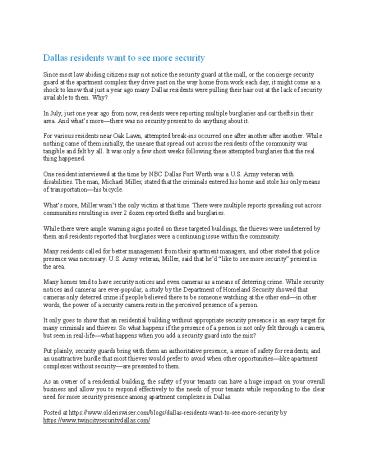Basic Principles in Flow Cytometry - PowerPoint PPT Presentation
1 / 21
Title:
Basic Principles in Flow Cytometry
Description:
Flow Cytometry is the technological process that allows for the individual ... Biological Oceanography. Parasitology. Bioterrorism ... – PowerPoint PPT presentation
Number of Views:395
Avg rating:3.0/5.0
Title: Basic Principles in Flow Cytometry
1
Basic Principles in Flow Cytometry
- Prepared by Hector Nolla
- Manager CRL Flow Cytometry Lab
- University of California, Berkeley
2
Flow Cytometry
- Flow Cytometry is the technological process that
allows for the individual measurements of cell
fluorescence and light scattering. This process
is performed at rates of thousands of cells per
second. - This information can be used to individually sort
or separate subpopulations of cells.
3
History
- Flow cytometry developed from microscopy. Thus
Leeuwenhoek is often cited in any discussion
regarding its history. - F.T. Gucker (1947)build the first apparatus for
detecting bacteria in a LAMINAR SHEATH stream of
air. - L. Kamentsky (IBM Labs), and M. Fulwyler (Los
Alamos Nat. Lab.) experimented with fluidic
switching and electrostatic cell sorters
respectively. Both described cell sorters in
1965. - M. Fulwyler utilized Pulse Height Analyzers to
accumulate distributions from a Coulter counter.
This feature allowed him to apply statistical
analysis to samples analyzed by flow.
4
History
- In 1972 L. Herzenberg (Stanford Univ.), developed
a cell sorter that separated cells stained with
fluorescent antibodies.The Herzenberg group
coined the term Fluorescence Activated Cell
Sorter (FACS).
5
Fluorescence Activation Process (or
Immunofluorescence)
Antibodies recognize specific molecules in the
surface of some cells
Antibodies are artificially conjugated to
fluorochromes
FITC
Antibodies
When the cells are analyzed by flow cytometry the
cells expressing the marker for which the
antibody is specific will manifest fluorescence.
Cells who lack the marker will not manifest
fluorescence
FITC
But not others
6
Cellular Parameters Measured by Flow
Intrinsic
Extrinsic
- No reagents or probes required (Structural)
- Cell size(Forward Light Scatter)
- Cytoplasmic grabularity(90 degree Light Scatter)
- Photsynthetic pigments
- Reagents are required.
- Structural
- DNA content
- DNA base ratios
- RNA content
- Functional
- Surface and intracellular receptors.
- DNA synthesis
- DNA degradation (apoptosis)
- Cytoplasmic Ca
- Gene expression
7
Flow Cytometry Applications
- Immunofluorescence
- Cell Cycle Kinetics
- Cell Kinetics
- Genetics
- Molecular Biology
- Animal Husbandry (and Human as well)
- Microbiology
- Biological Oceanography
- Parasitology
- Bioterrorism
8
- Flow cytometry integrates electronics, fluidics,
computer, optics, software, and laser
technologies in a single platform.
9
Cells are presented to the laser using principles
of hydrodynamic focusing
Y
Z
X
Y
Z
X
10
Laminar Fluidic Sheath
Core Sheath
Outer Sheath
11
- Each cell generates a quanta of fluorescence
Photomultiplier Tubes (PMTs)
PE FL
FITC FL
488nm Sct
Discriminating Filters
Forward Light Scattering Detector
Confocal Lens
Dichroic Lenses
12
Negative cells are also detected
PE FL
FITC FL
488nm Sct
Forward Light Scatter
Dichroic Lenses
Confocal Lens
13
Optical Bench Schematic
14
From Fluorescence to Computer Display
- Individual cell fluorescence quanta is picked up
by the various detectors(PMTs). - PMTs convert light into electrical pulses.
- These electrical signals are amplified and
digitized using Analog to Digital Converters
(ADCs). - Each event is designated a channel number (based
on the fluorescence intensity as originally
detected by the PMTs) on a 1 Parameter Histogram
or 2 Parameter Histogram. - All events are individually correlated for all
the parameters collected.
15
Light Scattering, 2 Parameter Histogram
Bigger
Apoptotic Cells
Bigger Cells
90 degree Light Scatter
Dead Cells
More Granular
Y Axis
X Axis
Live Cells
Forward Light Scatter (FLS)
16
1 Parameter Histogram
Positive
Negative
Brighter
Dimmer
Count
6
4
1
1 2 3 4 6 7
150 160 170 .. 190
Channel Number
Fluorescence picked up from the FITC PMT
17
2 Parameter Histogram
Single Positive PI Population
Double Positive Population
PE FL
Negative Population
Single Positive FITC Population
FITC FL
18
Gating and Statistics
- Data generated in flow cytometry is displayed
using Multiparamater Acquisition and Display
software platforms. - Histograms corresponding to each of the
parameters of interest can be analyzed using
statistical tools to calculate percentage of
cells manifesting specific fluorescence, and
fluorescence intensity. - This information can be used to look at
fluorescence expression within subpopulations of
cells in a sample (gating).
19
Flow Cytometry Data
Smaller Region, Live cells mostly
Larger Region includes all cells
20
Running Samples
- Prepare samples.
- One sample should be completely negative. This
sample should be analyzed first. This sample is
used for adjusting the PMTs amplification
voltage. - Adjust the PMT Voltage until you can see a
population peak in the first decade of your 1
parameter and or your two parameter plot.These
samples are used for adjusting Spectral Overlap. - Once the instrument settings are optimized, run
samples and collect data.
21
Flow Cytometry and sorting































